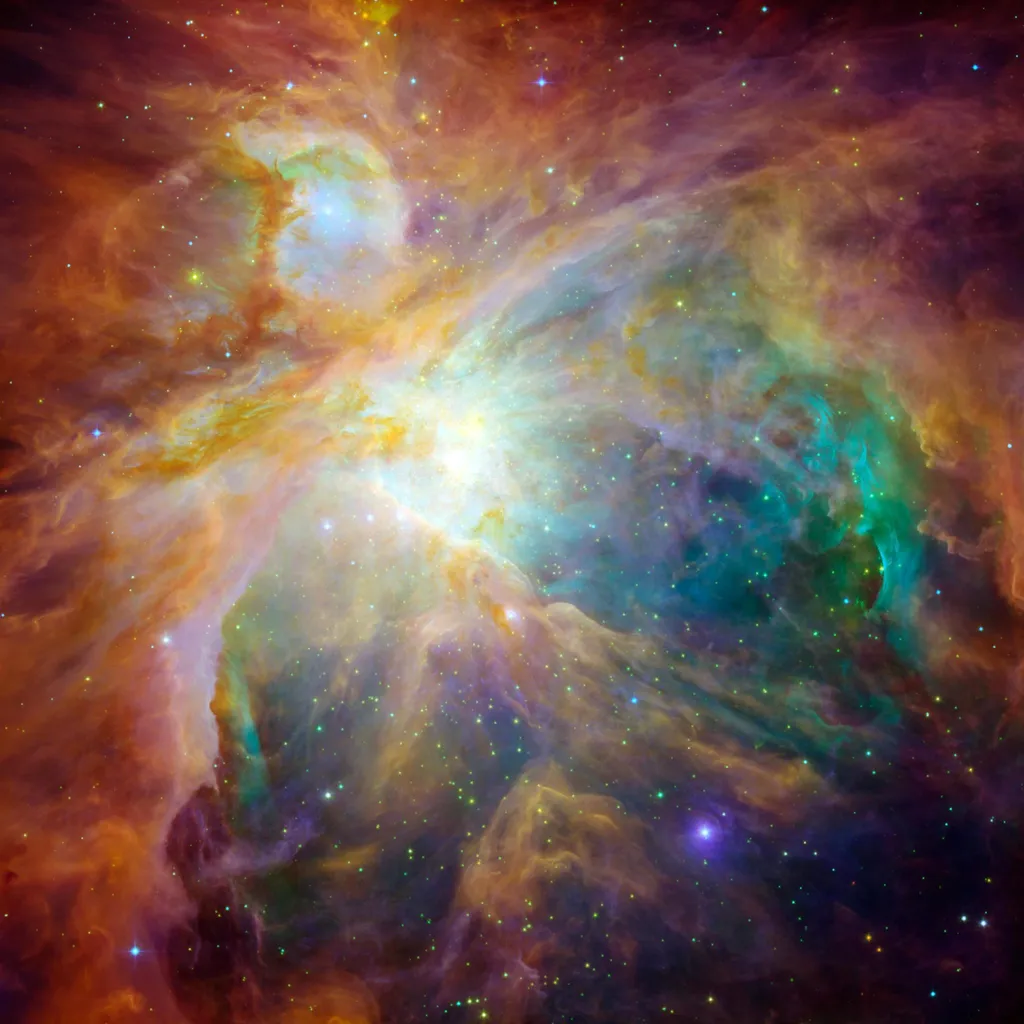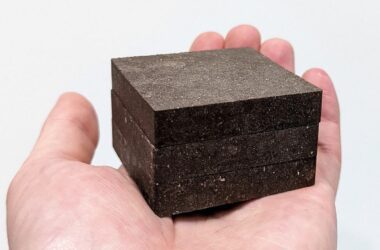
Cette image de la nébuleuse d’Orion, le point le plus brillant de l’épée de la constellation d’Orion, montre des molécules riches en carbone, appelées hydrocarbures aromatiques polycycliques (HAP), sous forme de filaments rouges et orange. Cette image a été capturée grâce à l’association des télescopes Hubble et Spitzer, deux prédécesseurs du télescope spatial James Webb. “Avec le Webb, nous serons en mesure de voir beaucoup plus de détails, y compris les variations dans les traînées de HAP que nous devons actuellement peindre avec un pinceau relativement large”, a déclaré Christiaan Boersma, astronome à Ames et cochercheur principal d’un projet qui utilisera le Webb pour étudier les HAP. Boersma est membre de l’équipe centrale d’un projet scientifique de Webb Early Release qui étudie cette région exacte d’Orion. Crédit : NASA/JPL-Caltech/STSCI
Le télescope spatial James Webb de la NASA se prépare à fournir de nouvelles images incroyables de mondes lointains et de galaxies lointaines, mais le nouvel observatoire spatial infrarouge nous donnera également un aperçu sans précédent d’un minuscule composant de notre univers : la poussière spatiale. Une catégorie de poussière pourrait jeter un nouvel éclairage sur certains processus importants, tels que la formation et l’évolution des étoiles et des galaxies.
Techniquement parlant, les plus petites de ces particules de poussière sont des hydrocarbures aromatiques polycycliques. Ils sont désignés par leurs initiales, les HAP (qui ressemblent à “pa’s” comme dans “les pantoufles de grand-père”), et constituent l’un des types de molécules les plus abondants dans l’espace. Ils comprennent toute une famille de grosses molécules dont la structure ressemble à celle du grillage à poules – un treillis d’hexagones organisés selon différents motifs.
Après leur identification dans les années 1980, les astronomes ont découvert des HAP un peu partout où ils pointaient leurs télescopes : dans certaines des premières galaxies, dans les nuages de gaz où se forment les étoiles et – plus près de nous – dans l’atmosphère de Saturn’s moon, Titan.
In the past, astronomers were hampered by space dust because telescopes couldn’t see through the dark, massive dust clouds spread across galaxies. With the advent of infrared astronomy, telescopes were able to see through those obscuring clouds, and we discovered that space dust is actually a vital part of star and planet formation. Now Webb is poised to be a game-changer for unlocking its secrets.
“Webb has capabilities that dwarf those of previous infrared telescopes and will revolutionize astronomy,” said Louis Allamandola, one of the pioneers of the PAH field and a researcher at NASA’s Ames Research Center in California’s Silicon Valley.
Unprecedented Detail Ahead in Webb’s Dust Data
When NASA’s Spitzer telescope launched in 2003, with its next-generation infrared technology, PAH research took off.
“Now, Webb will bring superb spatial and spectral resolution,” said Christiaan Boersma, an astronomer at Ames and joint principal investigator on a project that will use Webb to study PAHs in space. “We’ll be able to see details – better details – on smaller scales than ever before. This will reveal how PAHs form and evolve in very different astronomical environments. And that will allow us to unravel the photophysics and chemistry that drive how star-forming structures arise and explain the remarkable diversity of objects we observe, from exoplanets and stars to galaxies.”
Boersma is excited about the detailed spectra Webb will provide. These are like fingerprints for light. When dust molecules are heated by the Sun or another star’s rays, they emit infrared light to cool off. The light patterns, or spectra, can help identify the different types of PAH molecules the light came from – if we can capture it well enough.
With lower-resolution infrared telescope technology, astronomers have detected broad PAH populations or families. Deciphering the spectrum of a single type of PAH is possible, but it’s painstaking work, requiring the synergy of telescope observations, lab work, and advanced computing that underlies Ames’ Laboratory Astrophysics group. The field was brought to maturity at Ames, allowing scientists to recreate in the lab the PAH-forming conditions of interstellar space and measure the spectral fingerprints of the molecules that result.
So far, they’ve nailed down the “light fingerprint” of around 100 different PAHs by studying molecules in the lab and another 4,000 with the help of computers. Armed with all that data, astronomers match known spectra to PAH populations observed in the sky.
It’s a big job, but researchers expect the powerful Webb telescope will bring a whole new approach.
“The holy grail for us is to be able to identify and quantify – directly from the telescope data – the specific PAH types making up the families we see,” said Boersma. “We’re closer than ever, thanks to the fundamental work that came before.”
With Webb’s resolution, they’ll be able to tease out smaller PAH subsets – defined by characteristics such as size, shape, and electric charge – that contribute to the observed spectra. To analyze and interpret the PAH observations, researchers will turn to a database of research built up by NASA scientists. The NASA Ames PAH IR Spectroscopic Database is freely available to the global scientific community and offers libraries of data and sophisticated tools.
“We’re entering the era of ‘PAH research 2.0’,” said Allamandola. “Looking at a spectrum is like listening to a symphony. Webb will allow us to hear all the different kinds of PAHs in the orchestra for the very first time. That is a giant step forward.”
The James Webb Space Telescope is the world’s premier space science observatory. Webb will solve mysteries in our solar system, look beyond to distant worlds around other stars, and probe the mysterious structures and origins of our universe and our place in it. Webb is an international program led by NASA with its partners, ESA (European Space Agency) and the Canadian Space Agency.



